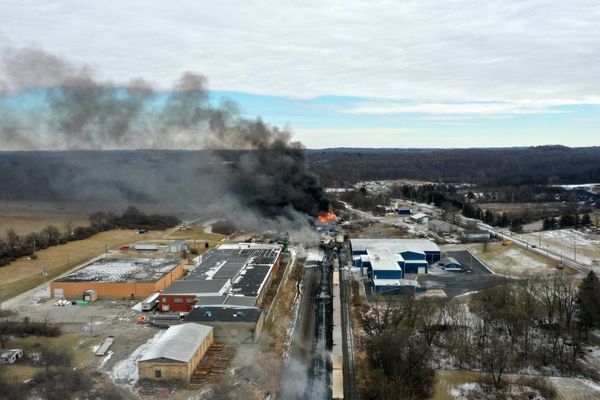On Saturday, at the very hour that the people of Chestertown, on Maryland’s Eastern Shore, gathered to remember the Black man lynched there by a white mob in 1892, police say a white teenager fueled by racist hatred started shooting people at a supermarket in a Black neighborhood of Buffalo, New York.
He is accused of shooting 13 people in all, 11 of them Black. Ten of his victims died.
It was the latest mass shooting in a violent nation that has more guns than people — and 46% of all privately-held guns in the world — and the latest in a sickening series of hate crimes.
I relate the racist massacre in Buffalo with the lynching memorial in Chestertown because I had just come from there when news bulletins started arriving from New York, and because it demonstrates — if such a thing was needed — that our reckoning with racism, earnest as it might be in some quarters, is far from complete.
In some places, it hasn’t even started.
In too many places, racism thrives.
We’ve taken down Confederate monuments. We’ve started to erect historical markers telling of the racist hangings that occurred while long-gone Americans watched and cheered. In Kent County’s seat, the better angels have supported anti-racism programs under the banner, “Chestertown Unites Against Racism.”
But the past is present. The challenge today is what it has been for centuries — getting white supremacy, racial hatred and paranoia out of the nation’s bloodstream.
Americans on the right mock efforts at racial reckoning. They ridicule “wokeness.” Andy Harris, the Eastern Shore’s Republican congressional representative, says he’s “done apologizing for America,” though it’s hard to think of him expressing regrets about anything, much less the nation’s failures on race.
The people of Chestertown on Saturday confronted the failures that led to the lynching of 23-year-old James Taylor on May 17, 1892. The town on that date was “united in failure,” said Mayor David Foster.
“It was a failure of our justice system, a failure of our police, of our media and common citizens,” he told the audience seated at Emmanuel Episcopal Church for Justice Day 2022. “It was not outside agitators who came in. It was our town. It was our very community. It was the proverbial butcher, baker, candlestick maker. All of our town was united in failure.”
No one was ever held responsible for the murder of Taylor, who was accused of sexually assaulting the 10-year-old daughter of his employer, a Kent County farmer. According to the history compiled by Chestertown researchers, Taylor was hanged by a mob just five days after the girl identified him as her attacker.
Sumner Hall, the Chestertown museum dedicated to Black soldiers in the Civil War and beyond, provided an account of the atrocity culled from reports in local newspapers and The Baltimore Sun.
“A group of the lynchers met at a hotel on Spring Street to discuss their plan to lynch Taylor,” it states. “A town official met with them to ask that the lynching be held outside the town limits and to ask that the body not be mutilated. After the meeting, about 60 armed and masked men forced their way into the jail, broke into Taylor’s cell, and tied a rope around his neck. They dragged him over Cross Street to a small maple tree. The rope was thrown over a branch about 10 feet high and Taylor was pulled up and down repeatedly until he was strangled to death. His body was left hanging for a couple hours until it was taken down and later buried in an unmarked grave at the county Alms House on Broad Neck Road.”
Taylor maintained his innocence until his last hour. “I am an innocent man,” he told a Sun reporter, “and I am not afraid to say so even while I am expecting to meet my God in a few minutes.”
On Saturday, Justice Day, there were speeches and song, readings of poetry and an essay, all part of the reckoning with racist history taken seriously in Chestertown and promoted these last few years by the Maryland Lynching Memorial Project. Other communities have taken these important steps to face the past, and the effort at truth and reconciliation continues. Between 1854 and 1933, there were at least 44 lynchings in Maryland, and some are now memorialized with historic markers.
“Healing begins where the wound was made,” wrote the author Alice Walker.
But no sooner had the healing started in Chestertown, another wound opened in Buffalo.
“Black people were lynched yesterday,” Derrick Johnson, president of the NAACP, tweeted on Sunday.
The suspect in the supermarket shooting was a one-man firing squad, according to law enforcement, an executioner, killing people because of their skin color, apparently provoked by the racist complaint that whites are being replaced by immigrants and other people of color. It’s an old paranoia in resurgence, spread by pundits and politicians who see angry, bitter whites as their customer base and who exploit, in subtle and obvious ways, racial fears for the sake of ratings and votes. Some of their incited customers — and probably many of them — have guns.
Given that reality, and given what happened in Buffalo on Saturday, how are today’s race baiters any different than the mob leaders who lynched Black men in the bad old days?
Past is present. The country will suffer more racism and violence until the better angels, like those in Chestertown, become the dominant voices in our politics and our culture.







